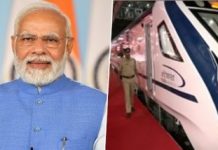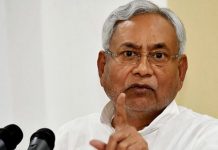 The message is loud and clear. The Union Budget 2018 was focussed on the rural sector. Prime Minister Narendra Modi and Union Finance Minister Arun Jaitely had in the recent past too made candid admissions of top priority to be accorded to the agriculture sector to ensure that gains reach farmers and growth is visible in the farm sector.
The message is loud and clear. The Union Budget 2018 was focussed on the rural sector. Prime Minister Narendra Modi and Union Finance Minister Arun Jaitely had in the recent past too made candid admissions of top priority to be accorded to the agriculture sector to ensure that gains reach farmers and growth is visible in the farm sector.
Anxious over its political fortunes in the aftermath of a narrow victory in the Gujarat Assembly elections, the Bhartiya Janta Party’s think-tank had swiftly incorporated a rural theme in its pre-budget discussions. The year 2018 is a dress rehearsal for the 2019 General Elections as three important states — Rajasthan, Madhya Pradesh and Karnataka — are heading for assembly elections this year.The latest data from the Central Statistical Organisation (CSO) reveals that the country’s economic growth is expected to be at 6.5 per cent, the lowest under the present NDA government, mainly due to slowdown in the agriculture sector. The CSO has projected the farm and allied sector growth to slip to 2.1 per cent in the current fiscal year from 4.9 per cent in the preceding year. The slide in growth of agriculture sector comes even as the Finance Minister in his last budget speech had pegged the agricultural growth rate to be 4.1 per cent which now seems to be wishful thinking. This evidently indicates the dichotomy between the government’s ambitious goal of doubling farmers’ incomes and dismal ground realities.
Background of agricultural distress
The deterioration in the health of agriculture in our country has not been sudden. It started during the post-liberalisation era and culminated into utter distress, with growing numbers of farmer suicides across India in recent years. It was perceived that economic liberalisation would ensure a favourable shift in terms of trade for agriculture in India. Policymakers in favour of liberalisation expected the producers to plough back surplus from cultivation to make long-term improvements in soil health and a sprout in agricultural productivity and growth rate.
The arguments that economic reforms would eliminate bias against agriculture, thereby improving the livelihood security of the rural poor, has remained an unfulfilled dream. Belying the expectations, these policies had a class bias against small and marginal producers and the poor. Agriculture sector started losing its significance as an income-generating activity at a faster pace with the onset of reforms. This can be corroborated from the fact that the growth rate of gross domestic product (GDP) of agriculture has been declining whereas the growth rate of GDP of our economy has been improving. (see box) The share of public capital formation in total capital formation in agriculture went down from 58 per cent in 1981-82 to 21 per cent in 2012-13, curtailing the availability of funds in rural infrastructure including irrigation, research and extension services.
Credit Flow to Agriculture and Farmer Suicides
Going by official claims, the allocation of funds under priority sector lending has been scaling up consistently year-on-year and the flow of agriculture credit that stood at 96,000 crore in 2004 has jumped to 10 lakh crore now. Not only credit flow but expansion of rural branch network has been noticed in the last two decades. Rural branches of public sector financial institutions have been flushed with funds but farmers are still at the mercy of the unorganised sector. Small and marginal farmers, who constitute almost 80 per cent of the total farming population, are kept out of the loop due to definitional delusions and divergence of funds.
No wonder that a fourth of direct agriculture lending is done in urban/metro branches in the garb of food-processing, warehousing, food-parks, etc. Besides, close to 50 per cent of agriculture credit is extended in the last quarter of a financial year (January, February and March). The credit requirements of farmers are minimum as this part of the year is neither sowing nor harvesting time. So farmers have to resort to non-institutional sources — private moneylenders and commission agents — for urgent needs at exorbitant rates of interest.
A study conducted by noted Agro Economist Ramakumar gives a lucid explanation of how the rich were cornering the funds meant for the poor. In 1990, loans worth less than 2 lakh constituted 92 per cent of loans under direct finance on agriculture. Now, only 46 per cent of direct agricultural finance is less than 2 lakh, which means that 54 per cent of direct agricultural finance is over 2 lakhs. Thus, the share of allocation to needy farmers has squeezed substantially.
 Taking insights from the All India Survey of Rural Debt, it can be derived that the number of farmers who were indebted had risen from 25 per cent of rural households in 1992 to about 46 per cent in 2013. The debt-asset ratio of farmers also registered an increase from 1.6 per cent in 1992 to 2.5 per cent in 2013. The intensification of debt burden on farmers in the absence of increase in repaying capacity has been one of the key factors in pushing farmers for suicides.
Taking insights from the All India Survey of Rural Debt, it can be derived that the number of farmers who were indebted had risen from 25 per cent of rural households in 1992 to about 46 per cent in 2013. The debt-asset ratio of farmers also registered an increase from 1.6 per cent in 1992 to 2.5 per cent in 2013. The intensification of debt burden on farmers in the absence of increase in repaying capacity has been one of the key factors in pushing farmers for suicides.
Union Agriculture Minister Radha Mohan Singh said in the last Monsoon Session of Parliament that as many as 11,400 farmers committed suicide in 2016. “According to National Crime Records Bureau (NCRB) data for 2016, which is yet to be published, 11,400 farmers committed suicide. In 2015, the number was 12,602,” he said in his reply
after a discussion in the Lok Sabha on agrarian crisis.
Farmer suicides are reported not only from rain deficit areas but from the rain-fed and irrigated areas of Punjab, Haryana and Uttar Pradesh also. This is because of stagnation in income and escalating cost of inputs in farming in the progressive states.
Minimum Support Price Regime
The Minimum Support Prices (MSP), which are announced by the government for certain crops to save farmers from depleting profits, are not of much avail as they are mostly announced during the sowing season, when it is too late to prepare additional land and for purchase of inputs.
Although there are over two dozen crops of Rabi and Kharif season covered under MSP regime, only paddy and wheat are procured with advance preparations. There are many flip-flops for other crops and farmers are mostly left to fend for themselves. The revision of MSP is mostly disproportionate to inflation and economists and farmers’ lobbies have been contesting for fair price of crops. The horticulture crops are excluded from MSP regime and farmers who have shifted from traditional crops to horticulture face hardships to market their produce.
According to a study by Food and Agriculture Organisation (FAO) of the United Nations, in India about 9 million people left working in agriculture between 2001-2011 mainly due to distress and not because they were hired for more gainful occupations. Investment in marketing, processing and infrastructure in farm sector is missing.
Capital Formation
Capital formation is imperative for improving long-term growth potential in agriculture. Public capital expenditure has a long-term beneficial impact on agriculture as compared to subsidies whose impact is short term. While the fact that the assured supply of water is indispensable for high agricultural growth is acknowledged in policy circles, the response of the government for allocation of resources for upgradation of irrigation facilities been lacking.
Agitations by Farmers
Farmers across India have been frustrated over under-recoveries in agriculture and rising debts to make both ends meet. Protesting farmers from Tamil Nadu, Maharashtra, Telangana, Punjab, Uttar Pradesh and some other states hit the headlines throughout last year that culminated in a protest by thousands of farmers under the banner of the All India Kisan Sangharsh Coordinating Committee in November at Jantar Mantar in New Delhi where around 184 farmers’ organisations from across the country protested and organised a mock Parliament called Kisan Mukti Sansad, raising issues concerning farmers.
The farmers’ distress is so severe that to attract the government’s attention, farmers from Tamil Nadu protested in the national capital with human skulls, slit their wrists to spill “protest blood”, conducted mock funerals and held live mice in their mouths and ate their own excreta, saying they couldn’t afford to eat anything else! In Rajasthan, hundreds of farmers dug up holes in the ground and buried themselves as part of the protest.
Loan Waivers
Various state governments have tried to appease farmers with loan waivers but this is not a panacea. Waivers are only transfer of funds which have risks unfolding in due course of time. Economists argue that farmers are the most disciplined re-payers of loans. The funds could be utilized for soil and water conservation, post-harvest infrastructure to reap sustainable gains. The states emulating each-other one after the other — Uttar Pradesh, Maharashtra, Punjab, and voices raised in the Southern states — may set a bad precedent.
Though the farming community is largely frustrated, there is still optimism about the upcoming budget. The frustration is due to the Prime Minister’s failure to honour his promise of implementing the Swaminathan Commission report, while the optimism is because it is the last full budget of the ruling NDA government and agrarian issues are expected to be tackled responsibly. Farmers also have a feeling that their frail voices have managed to reach the corridors of power.
Ajay Vir Jakhar, President of the Bhartiya Krishak Samaj, has recommended that Finance Minister Arun Jaitely extend all the incentives being provided under Startup India mission to Farmer Producer Organizations (FPOs), including tax exemptions, provision of capital and infrastructure. Though agricultural income of farmers is exempt from income tax, the income of FPOs is taxable at 30 per cent from the very first year — this is a major disincentive for farmers to come together to establish collective business entities. Allocation should be taken up to 3,000 crore. MSP should be effectively implemented for pulses and oilseeds as India imports over 70 per cent of its edible oil needs. The remedy is to keep edible oil duties higher for farmers to see value in oilseed cultivation.
The other suggestions of farmers are that the government revive agriculture extension, announce a five-year plan to appoint one agriculture graduate as extension worker for every ten villages, thus creating 60,000 jobs.
The Chairman of Federation of Indian Farmers Associations, a pan-India farmers’ outfit, has also laid stress on meeting farmers’ demands to give them immediate relief. The President of the organisation, Satnam Singh Behru, during the pre-budget discussions with Finance Minister Jaitley in New Delhi, asserted to re-design the Prime Minister’s Crop Insurance Scheme, as in its present format the forces operating the market are making a fast buck at the cost of farmers. “Farmers have been paying premium and filling the coffers of insurance companies but the maladies in the scheme have denied farmers benefits of the scheme,” he said.
The unit of insurance should be an individual farm not a block as many genuine victims of weather vagaries are excluded by this arrangement. For instance, insurance cannot be claimed if a hailstorm occurs in less than 50 per cent of the block.
For the All India Kisan Sangharsh Coordination Committee, the revision of MSP by 50 per cent is a major demand that overlaps the wish lists of most of the farmers’ organisations. “Get rid of subsidy and give the farmers remunerative prices,” said Avik Saha, a senior member of the organisation that also demands a complete waiver on agricultural outstanding that is estimated at 13.55 lakh crore (from institutional sources) and enable the producers for profitable price recoveries.
Despite several reform initiatives taken by the incumbent government and its predecessors, agriculture marketing in India continues to suffer from several deficiencies. These stem from less than proportionate increase in number of mandis, non-transparent price discovery, bottlenecks in price dissemination, non-transparent levies and variation in charges on the sale of produce in different states.
We need to initiate barter-negotiations with deficit countries to expand the demand base of our commodities in global markets. India’s agriculture commodities face stiff non-tariff barriers in many developed countries simply because of their bias towards other trade partners. They refuse or restrict our agriculture products. Government should allow preferential imports of electronics, automobiles, aircrafts, fuel, etc. to provide international edge to our commodities.
In order to safeguard the interests of the producer farmers, Indian agriculture should switch from being production-centric to market-centric. There is no quick fix solution for the challenges faced by farmers. A shift in the development paradigm is imminent to address the livelihoods of half of India’s population to make it a world power.
The results of Gujarat elections are a precursor to growing farmer resentment and its political ramifications. Political parties have taken quick cognizance of grievances of voters and may come out with temporary relief to secure their vote bank. The political outcome of the agrarian crisis is noticed and recorded in time but the ramifications on psychological and social fabric of the country with so much diversity may be more precarious and a greater cause of concern. The proliferation of narcotics trade and drug addiction in rural pockets of India, crime against women and children in the hinterland and caste clashes are manifestations of unrest among the rural communities. The doubling of farmers’ income by 2020 would not be possible when agriculture is growing at around 2-3 per cent while it should be growing at 14 per cent.
letters@tehelka.com














